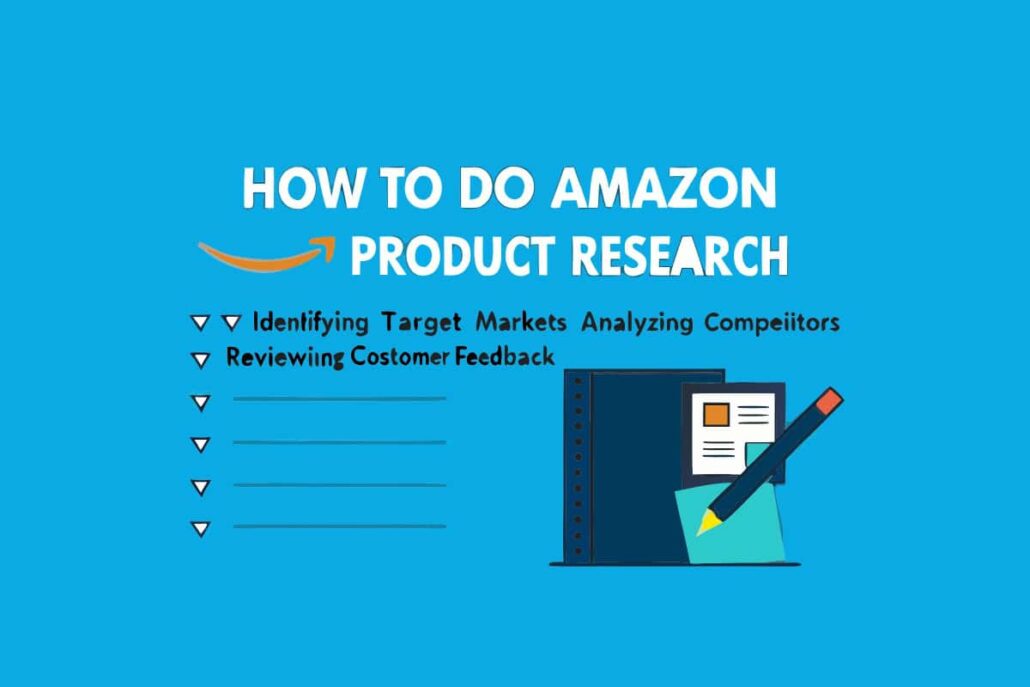
Great Amazon product research sits at the heart of every winning selling plan on the site. Skip this step, and even top sellers can end up with slow-moving stock or caught in crowded categories they never meant to enter.
How to Do Amazon Product Research
In this full guide, youll learn practical ways to spot hot products, check real buyer demand, and use hard numbers instead of guesswork to steer your choices. Well show you the apps, tricks, and mind-set successful sellers lean on to find hidden gems and dodge expensive errors.
Understanding Amazon Product Research Fundamentals
Simply put, Amazon product research means looking at products, markets, and rivals in a step-by-step way so you can spot money-making chances. To do that, you need to check demand levels, how many people are already selling the item, profit room, and any trends that might pop up down the road.
Good research answers four big questions: Is enough people searching for this item? Can I beat the sellers already listed? Will the margin pay for my time and money? Is the market likely to be strong a year from now?
Most sellers split the job into three bites: first finding possible products, then digging into data, and finally sizing up the competition. Each piece stacks on the last, giving you a clear view of whether to move forward or walk away.
Essential Tools for Amazon Product Research
Free Research Tools
Amazon’s Best Sellers page is a quick way to see which products are hot right now. Updated every hour, this list shows rising items that could open up fresh market ideas for your store.
Google Trends backs up your hunches by revealing how often people search for a product over weeks, months, or even years. With this tool, you can spot seasonal spikes, slowly rising niches, or categories that are fading fast.
Amazon’s own search bar is also a gold mine. Start typing a general idea, watch the auto-complete hints pop up, and jot them down-each suggestion shows what real buyers are curious about today.
Paid Research Tools
Jungle Scout gives you deep sales estimates, revenue forecasts, and a clear look at how many sellers are in each market. With its historical charts, you never have to guess if a trend is here to stay or just a fad.
Helium 10 bundles several tools into one, from product discovery to keyword tracking and competitor insight. Its Black Box feature lets you filter by sales numbers, stars, stock levels, and more, so you hunt smarter, not harder.
Viral Launchs Product Discovery serves up market data from millions of listings and highlights options that match your goals. Set the rules you care about-sales count, price range, even review scores-and let the software do the heavy lifting for you.
Step-by-Step Product Research Process
Phase 1: Initial Product Discovery
Start by jotting down product groups you actually care about or know something about. Keep your wallet, available shelf space, and how easy they are to ship in mind as you choose ideas to chase.
Surf Amazon’s main category pages to page through all the options. Give extra attention to items that stay high on the sales chart and earn praise from buyers. Products priced between $15 and $50 usually fit a sweet spot where customers can easily say yes and sellers can still make decent money.
Dig into customer reviews on those listings to spot the usual gripes or features people wish were better. Each of these pain points is a clue, a tiny opening where your own product could stand out by solving a problem.
Phase 2: Market Demand Analysis
Look at search-volume numbers to see just how badly shoppers want what you’re thinking about. Tools like Helium 10s Magnet or Jungle Scouts Keyword Scout show you how many eyes land on product keywords each month.
Next, watch the sales speed using Best Sellers Rank, or BSR, data. A lower, stable BSR usually means strong and steady demand . Keep checking how BSR moves week after week to tell the difference between a flash-in-the-pan hit and a lasting trend.
Finally, consider whether demand swings with the seasons. Some items sell steadily all year, while others boom for a few months and then flop, so plan your stock and cash around those ups and downs.
Phase 3: Competition Assessment
NOW ITS TIME TO SIZE UP THE COMPETITION. START BY LOOKING AT THE TOP-RANKING ITEMS IN YOUR NICHE AND PULLING TOGETHER INFO ON WHO IS SELLING WHAT. TAKE NOTE OF HOW MANY ESTABLISHED VENDORS ARE IN THE GAME, WHAT PRICE POINT THEY CHOOSE, AND HOW CUSTOMERS FEEL ABOUT THE QUALITY.
SCROLL THROUGH COMPETITORS LISTINGS FOR CLUES ON THEIR VALUE PROPOSITION. YOU WANT TO SPOT ANY WEAK SPOTS WHERE YOU CAN ADD BETTER FEATURES, LOWER THE PRICE, OR OFFER FRIENDLIER CUSTOMER SERVICE.
DONT FORGET TO ASK YOURSELF WHAT STANDS BETWEEN NEW SELLERS AND YOUR NICHE. IF STARTUP COSTS ARE HIGH, REGULATIONS ARE CONFUSING, OR A SINGLE BRAND ALREADY OWNS THE SPACE, GROWTH COULD TAKE LONGER THAN EXPECTED.
KEY METRICS TO EVALUATE
SALES PERFORMANCE INDICATORS
MONTHLY SALES VOLUME IS YOUR FIRST CLUE ABOUT DEMAND. A GOOD RULE OF THUMB IS TO TARGET PRODUCTS THAT MOVE AT LEAST 300 UNITS PER MONTH.
REVENUE POTENTIAL TELLS YOU WHETHER THE ITEM CAN PAY THE BILLS. SIMPLY MULTIPLY THE ESTIMATED SALES VOLUME BY THE AVERAGE SELLING PRICE TO IMPRESS YOURSELF WITH THE POSSIBLE MONTHLY TAKE.
PRICE STABILITY SHOWS HOW MATURE THE MARKET IS. WHEN PRICES FLUCTUATE WILDLY YOU MAY BE LOOKING AT BRUTAL COMPETITION OR AN UNPREDICTABLE CUSTOMER BASE.
Profitability Metrics
Before diving into a new product on Amazon, run the numbers to see how much actual cash you keep. Subtract every hidden cost-not just manufacturing but also Amazon fees, shipping, and paid ads-from your selling price. A good rule of thumb is to aim for at least 30%. This cushion helps you ride out surprise expenses or sudden drops in demand.
Next, think about how long it will take to get your money back. Line up the total start-up costs with the profit you expect each month and do the simple math. The quicker you reach positive cash flow, the healthier your business will feel.
And yes, those ads matter. Almost every Amazon listing needs steady promotional dollars just to stay visible. So include that spend in your profitability picture from day one.
Analyzing Market Opportunities
Identifying Underserved Niches
Scouting for fresh ideas? Start by hunting categories that shoppers really want but few sellers touch. These hidden corners often pop up in brand-new trends, hobby markets, or specialized uses for everyday items.
Don t stop at your home turf; look overseas, too. A hot gadget in Europe or Asia might flop back home simply because no one has offered it yet.
Seasonal items can work, but tread carefully. They should fit current fads and still have a shelf life long enough to pay off your investment.
Evaluating Product Differentiation Potential
Spend an afternoon reading reviews for top competitors. You ll quickly spot complaints, missing features, and small upgrades customers dream about. That real-world feedback can steer your design or remind you why cheaper knock-offs won t cut it.
Look for chances to bundle-products that work well together-so shoppers see extra value. A kitchen set, for instance, might pair pots, pans, and utensils in one box, making meal prep easier.
Think about creating your own label for basic items like batteries or cleaning spray. By adding a fresh logo, a pleasant scent, or eco-friendly packaging, you can stand out from many plain, store-brand versions.
Common Research Mistakes to Avoid
Many sellers zoom in only on best-selling items yet ignore how many rivals are already there. The biggest catalogs often have dozens of competing listings and that crowd makes winning reviews and ranking much harder.
Chasing a hot fad today may leave you with a warehouse full of yesterday’s news tomorrow. Always weigh long-term trends over quick spikes or gimmicks that could fade before the next season.
Seasonal products-summer pool toys, holiday lights, or Halloween costumes-can earn big money, but each needs tight planning so you dont run out early or get stuck with leftovers.
Another pitfall is looking only at product cost while missing shipping, Amazon’s cut, storage fees, and ads. Add every expense together before promising yourself that a 20% margin will be enough.
Advanced Research Strategies
Trend Analysis and Forecasting
Pair Google Trends with Amazon numbers to spot rising goods before everyone else jumps in. Searches that climb steadily for a year or two usually signal room to sell.
Scroll through TikTok, Instagram, and YouTube to catch whispers of items popular with your target crowd.
Patent archives and trade reports also show emerging tech or designs, helping you prepare for fresh markets before they go mainstream.
Supplier and Sourcing Research
Start scouting for suppliers early so you know their minimum order numbers, pricing, and quality gates. This groundwork feeds directly into your budget plans and gives you an edge over competitors.
Keep an eye on how suppliers respond and share info-stable communication really matters when you want steady stock and dependable product quality.
Geography counts too; where a factory sits can change freight costs, delivery speed, and even the customs rules you must follow.
Making Data-Driven Decisions
Pull together data from sales reports, market trends, and customer feedback to build rounded product profiles. Leaning on just one number-or tool-can lead you down the wrong path.
Set up a scoring sheet that gives heavier weight to factors your business truly cares about, making side-by-side comparisons fairer and clearer.
Before sinking serious cash into a new item, run a small test order or a trial campaign to see if your guess pays off.
Write down what you learn at each step so future teams can spot patterns, repeat wins, and steer clear of costly misfires.
Building Your Product Research System
A step-by-step research system cuts wasted time and delivers steadier results over the long haul.
Map out the same questions, dashboards, and checklists you use for every new idea, then fine-tune them as you gather new insights.
Create a Routine Research Habit
Set up a regular rhythm for research so you can spot fresh chances and keep an eye on how the market shifts. Because trends can flip overnight, staying watchful lets you tweak your business quickly.
Network for Insider Knowledge
Cultivate friendly ties with fellow sellers, suppliers, and industry pros they often share tips that regular data searches miss.
Turning Research into Action
Great information is useless unless you turn it into a plan. After you find a hot idea, write a clear launch road map that covers sourcing, stock handling, and how youll promote the product.
Give each step a realistic due date, knowing that delays in shipping, quality checks, and fine-tuning your Amazon listing can slow things down.
Once the new item goes live, watch the numbers closely and be ready to tweak ads, pricing, or inventory if actual sales dont match your forecast.
Keep in mind, product research never really ends. Top Amazon sellers are always hunting new ideas while refining the ones already in their store.

